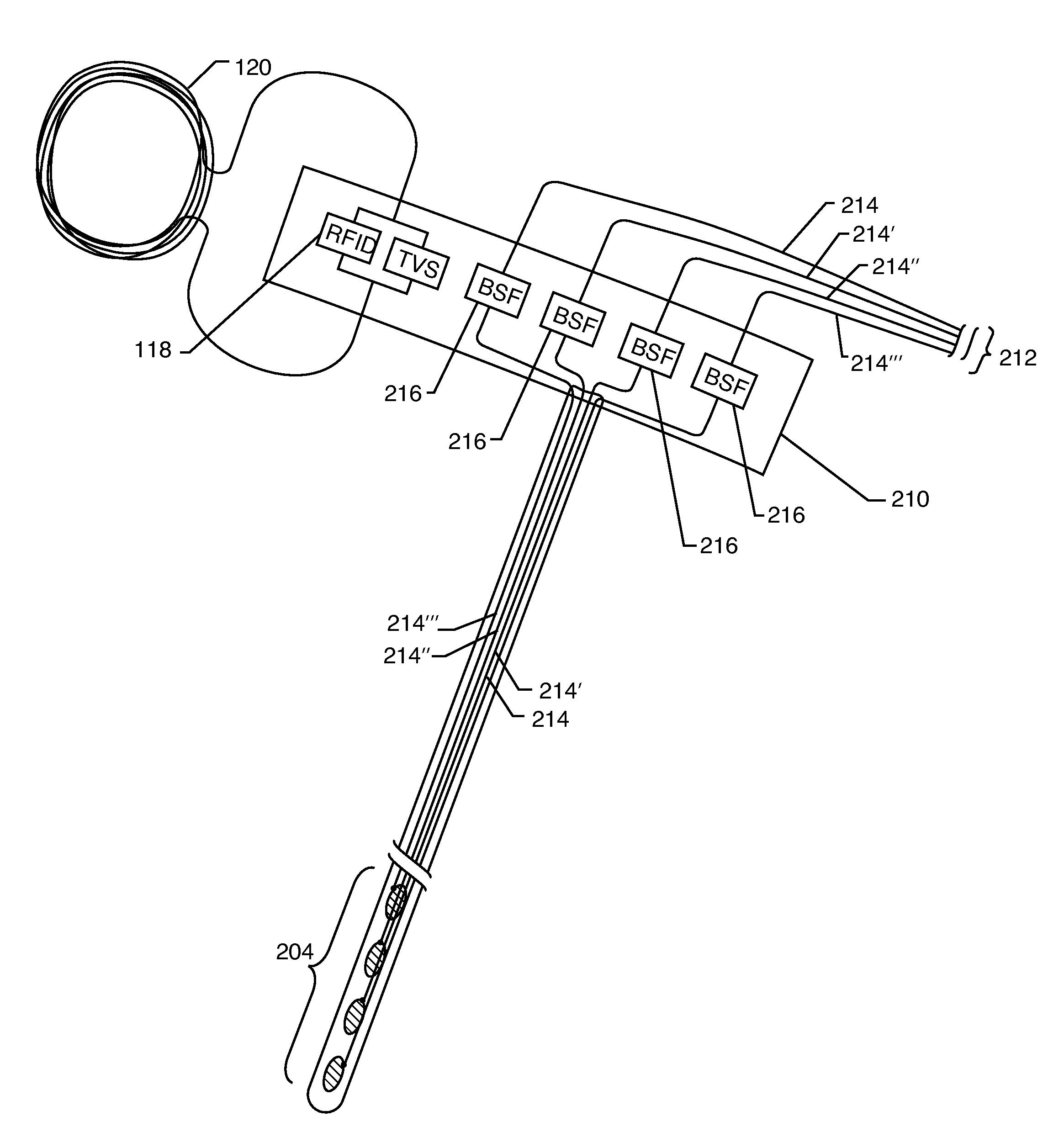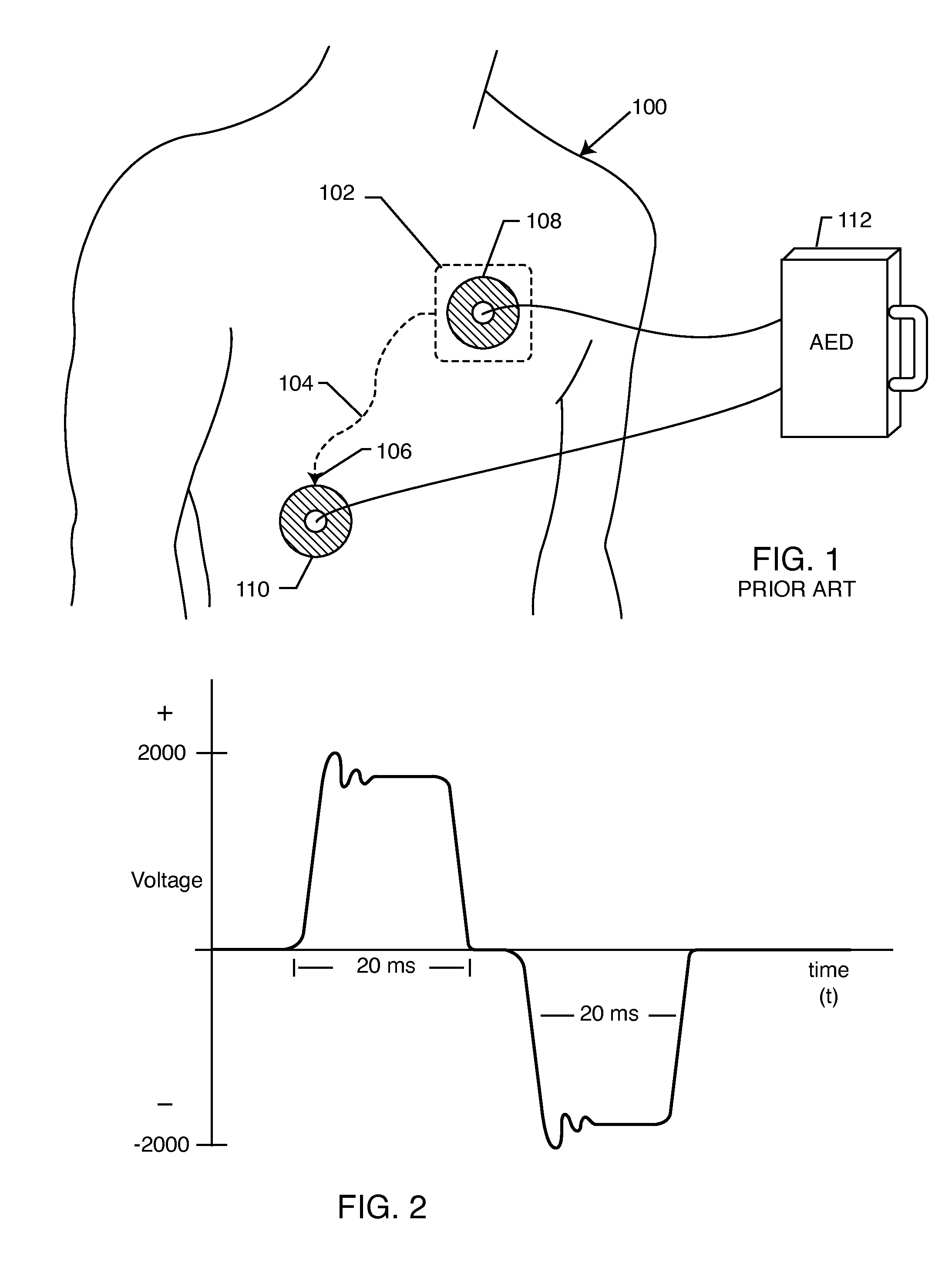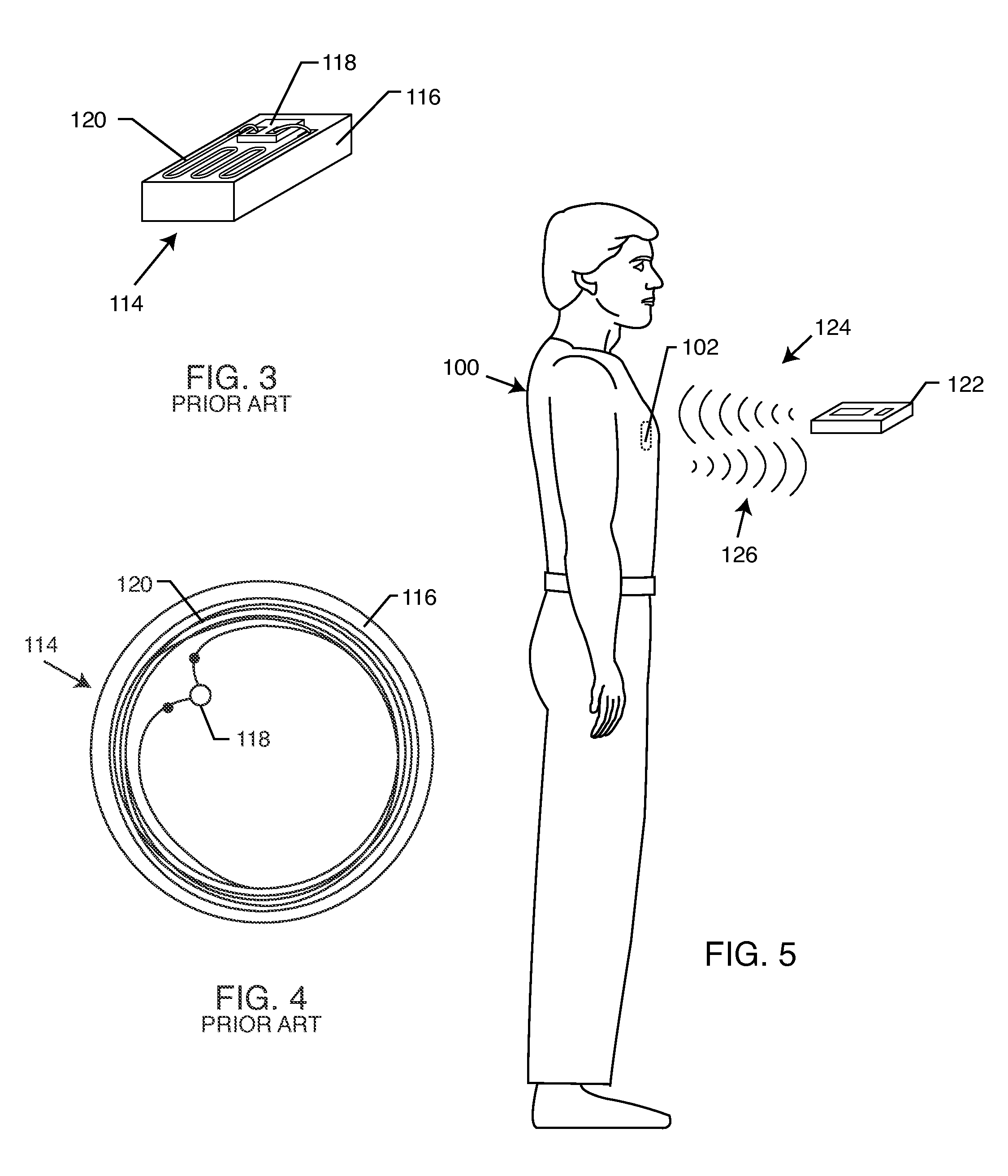Transient voltage suppression circuit for an implanted RFID chip
a technology of transient voltage suppression and implanted rfid, which is applied in the field of high-voltage circuit protection, can solve the problems of limited information so provided, difficult to identify, and often unreliable identification forms
- Summary
- Abstract
- Description
- Claims
- Application Information
AI Technical Summary
Benefits of technology
Problems solved by technology
Method used
Image
Examples
Embodiment Construction
[0052]The present invention is directed to a radio frequency identification (RFID) system for use with active implantable medical devices (AIMDs) 102 and an associated RFID tag 114. Specifically, the RFID system comprises an RFID tag 114 implanted in a patient's body and associated with an implanted AIMD 102 or component, and an interrogator 122 in communication with the RFID tag 114.
[0053]More particularly, the present invention resides in circuit protection devices for RFID microchips 118. Such circuit protection devices can be a diode, a Zener diode, an avalanche diode, Zener connected series opposing (back-to-back) diodes, or just a general TVS diode. Transient voltage suppression diodes are electronic components used to protect sensitive circuits from voltage spikes induced on connected wires. In the case of an RFID chip 118, the connected wire is its own antenna. TVS diodes are also commonly referred to as transorbs after the brand name TransZorb, registered by General Semicon...
PUM
 Login to View More
Login to View More Abstract
Description
Claims
Application Information
 Login to View More
Login to View More - R&D
- Intellectual Property
- Life Sciences
- Materials
- Tech Scout
- Unparalleled Data Quality
- Higher Quality Content
- 60% Fewer Hallucinations
Browse by: Latest US Patents, China's latest patents, Technical Efficacy Thesaurus, Application Domain, Technology Topic, Popular Technical Reports.
© 2025 PatSnap. All rights reserved.Legal|Privacy policy|Modern Slavery Act Transparency Statement|Sitemap|About US| Contact US: help@patsnap.com



